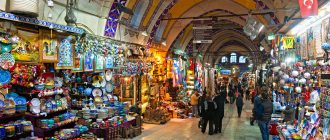Want to learn more about Iznik Turkish designs? Read on for facts and info on the traditional designs used to adorn Iznik pottery from Turkey…
Iznik designs can be found on the magnificent works of pottery developed in the region of Western Anatolia. The town named Iznik was once the breeding ground for highly decorative ceramic products back in the sixteenth century. Today prime examples of these all time classic Iznik Turkish designs can be seen in many religious and imperial structures in Istanbul as well as The British Museum.
History of Iznik Design
Initially Iznik designs were displayed on vessels modeled on Chinese porcelain. This was because the ruling Ottomans of Turkey had a fascination for Chinese porcelain. However, it was not possible for Turkish potters to create porcelain, which is why they had a low-fired body comprising of silica and glass for their vessels. This was known as Fritware.
Although the Iznik designs did take inspiration from Chinese styles, they were classified as highly original in their own league. The Islamic world had long been admiring the beauty of Chinese ceramics, especially during the Ottoman and Safavid rule in Persia. Chinese blue and white pottery in particular influenced the creation of Safavid pottery, which in turn had a profound impact on Iznik Turkish designs.
Iznik designs had come into their own by the mid of the 16th century. Ceramics from this region could now be seen adorned with their own vocabulary of abstract and floral motifs that were used to create tight designs. The palette was deliberately kept limited, but with the passage of time the designs underwent a transition from being purely symmetrical to rhythmic in nature.
It was in the late 15th century that the red earthenware produced and used in Iznik was replaced with white bodies that were composed of 80% silica content, with the remaining 20 being glass frit and white clay in equal proportions. In order to reduce the firing temperatures the Turks added lead and sodium compounds to the mixture. Although the Turks had been involved in producing frit ware since the 14th century especially towards the Near East, Iznik frit ware happened to be a breakthrough innovation.
Iznike Design and Decoration
The bodies of the Iznik vessels were difficult to work upon the wheel. This was primarily because they lacked plasticity and because of this reason they could not throw the vessels in one piece. Rather, they had to be turned and molded into shape during the construction process.
An extremely white slip coating had to be given to the wares prior to the bisque firing process. Once bisqued, the Turkish potters would apply the decoration in under glaze. They used a stencil to pronounce the outlines of the designs. As of tradition Iznik designs were painted in a seven- color combination, although a number of vessels with lesser colors have also been found.
The most popularly used colors in Iznik pottery designs included blue, purple, red, green, turquoise, grey and black. All Iznik designs prior to 1520 were in blue. Turquoise was the first color to be added to the designs after this. By the 1540s the Turks had developed polychrome palettes for their designs.





